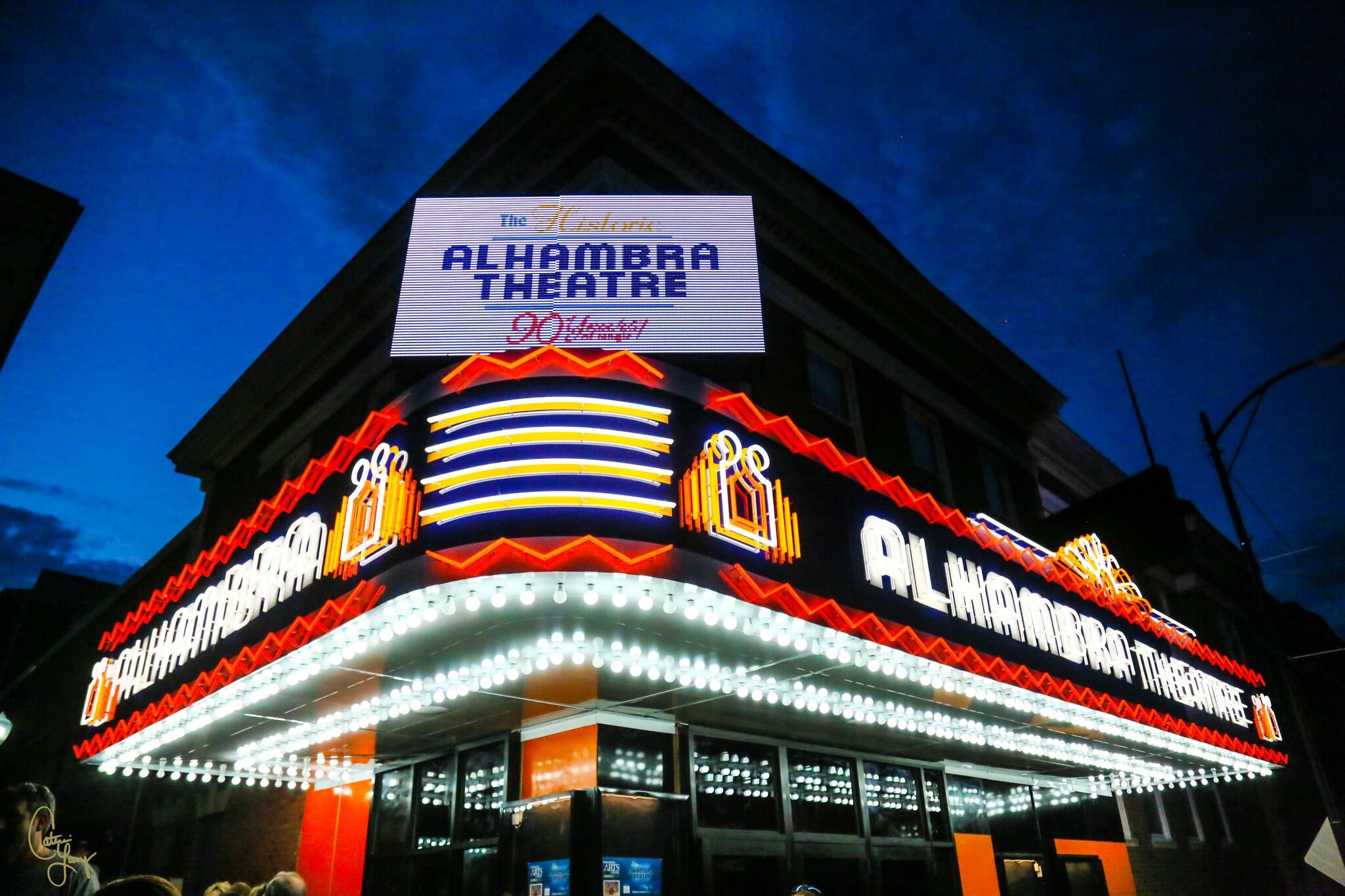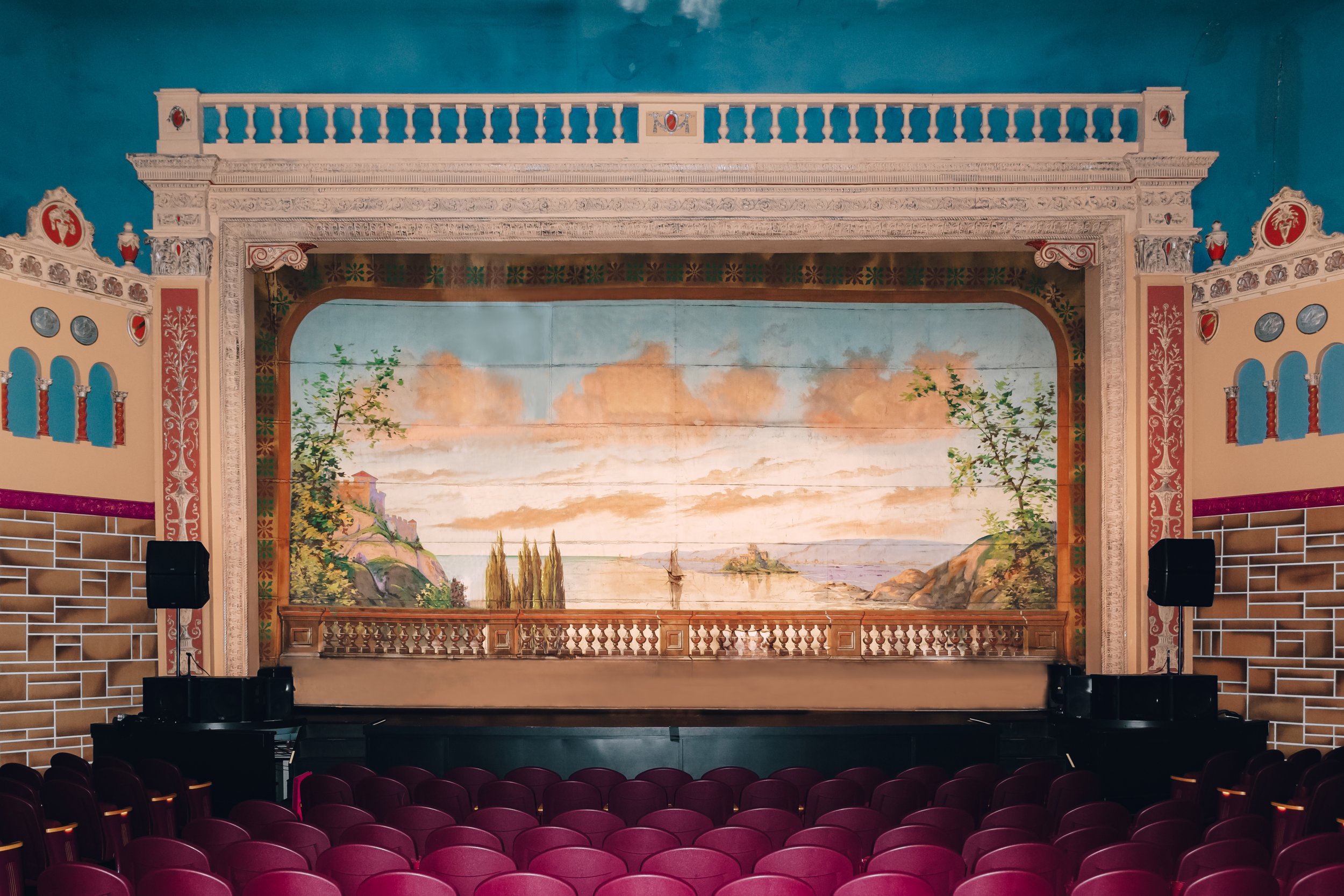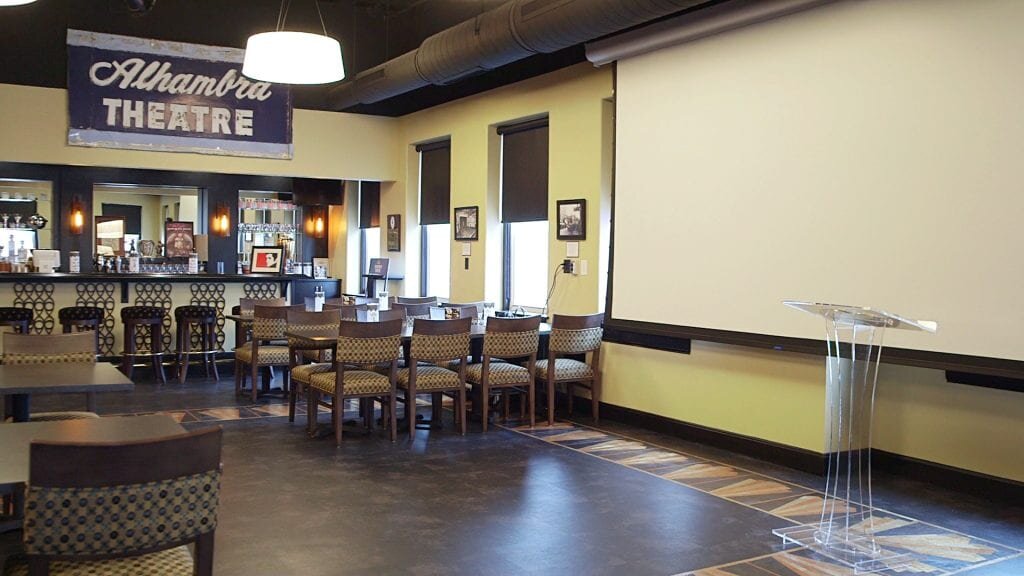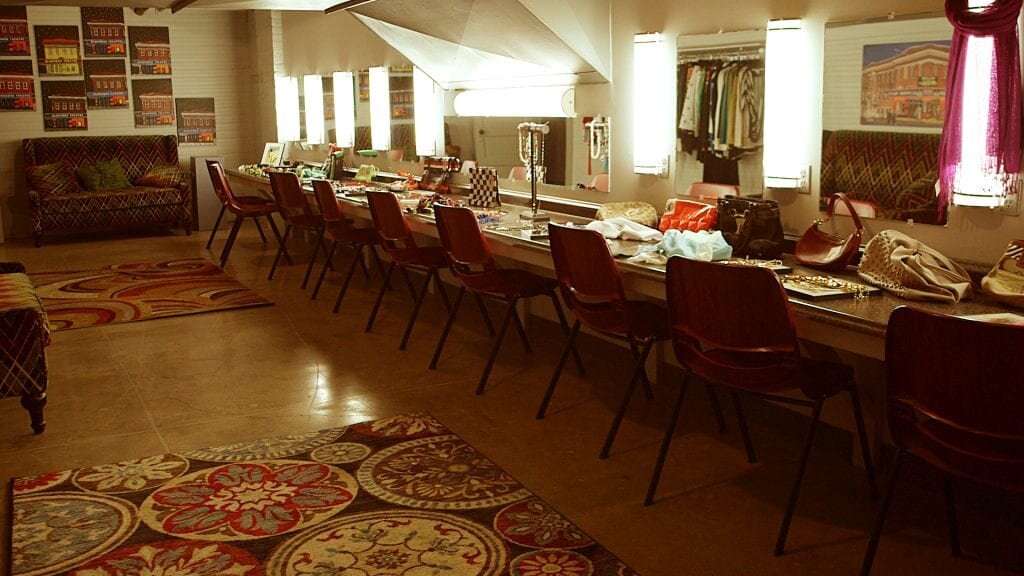The Alhambra Theatre is a 650-seat proscenium theatre offering a variety of performances. This historic landmark was completed in 1928 and re-opened in 1983 as a community performing arts center, managed by the Pennyroyal Arts Council.
The Alhambra Theatre’s marquee first brightened Hopkinsville’s Main Street on May 28, 1928, just a year before the Great Depression, as an invitation to be entertained and to share memorable experiences with friends and neighbors.
A community wide celebration was held on Armistice Day in 1928, to lay the cornerstone of the building. Schools were dismissed and parades were held for the occasion. A contest was held to name the theater and the Alhambra was selected. It was at the Alhambra Palace in Granada, Spain that Queen Isabella gave Christopher Columbus the funds to sail to the new world.
Drawing inspiration from the Spanish castle, the original design was done in a Spanish-Moorish style, with ivory and gold colors used throughout the lobby, serpentine columns and intricate moldings at the ceiling. The auditorium still depicts a Spanish castle and gardens with coat of arms appearing over the doors and climbing roses and vines around the casement windows. The hand-painted canvas covering the stage opening represents a view from the castle of the Spanish countryside.
This landmark theater was acclaimed upon its initial opening as the “most beautiful and practical theater in America.” It opened presenting both live stage shows and silent movies in May 1928. The opening movie was John Barrymore in “Don Juan” with additional comedies, newsreels and a live orchestra. Movie bills changed almost daily and a new stage show was brought in every week. Vaudeville, Broadway touring groups, star performers and local talent trod the Alhambra’s boards. Billy Sunday spoke from the stage in June 1928. Other performers during that time include Andy Divine, Tom Mix and his horse Tony, Gene Autry, and Desmond’s New York Roof Garden Revue.
The theatre was originally part of a municipal building that housed city, county and state operations. In addition to the then movie theater, the City-County Public Building constructed next door to the courthouse also had an armory, police station and city hall.
Today, the building is owned by the Christian County Fiscal Court who purchased the city’s interest in the building in the 1960’s. The county had contracts with different cinemas companies to manage the Alhambra as a movie house until around 1980, and its transition to a local performing arts center began a few years later with the Pennyroyal Arts Council managing the theatre for the county.
The influence of two Hopkinsville women – Becky Williams and Jane Chapman – who had a role in convincing choral departments at Hopkinsville and Christian County high schools to use the theater for big musical productions. When the theater began to age, the community and, specifically, the Pennyroyal Arts Council banded together to gather funds and restore the theater to its former glory.
Multiple renovations to the theatre have been completed with the last major renovation in November 2018. The renovation included redesigning the lobby while maintaining architectural elements and concepts and adding state-of-the-art stage lighting, a new stage floor, curtains, sprinkler systems, handicap-accessible bathrooms and other features the original layout did not offer. The improved auditorium offers seating for 650 with 171 of those in the balcony.
The renovation also included an expansion of the theater’s square footage into the building’s second floor, which previously housed circuit court clerk offices. It’s now called The Hall at the Alhambra and has a bar and seating for about 80 people.
The second floor was recently named home to the business offices of the Pennyroyal Arts Council where they have been proud stewards of the theatre for the past 44 years while providing and managing programming for the community.
Points of Interest
Outside cornerstone indicating collaboration between the city and county
Original archway entrance, tile floor and chandelier from 1928
Mosaic tiles and theatre auditorium facade fashioned after Alhambra Palace in Grenada, Spain
Proscenium stage arch, firescreen and original chairs
Viewing room original film room
Original general electric panel, tin ceiling, part of the original marquee featured in new The Hall space














